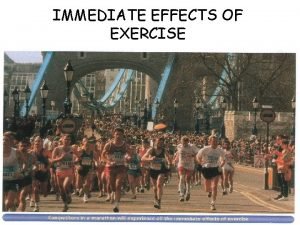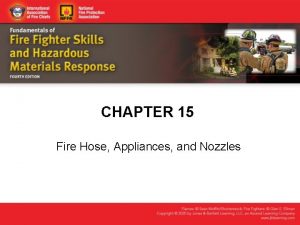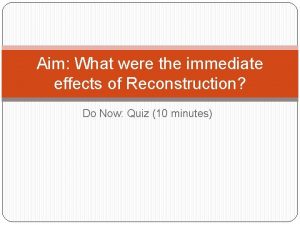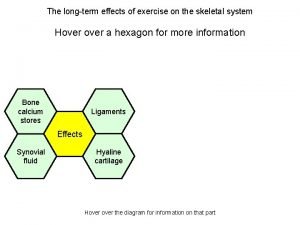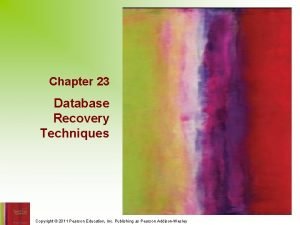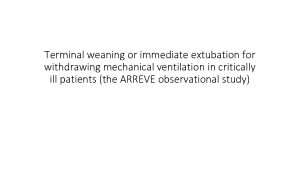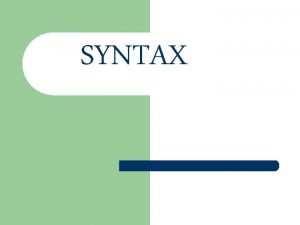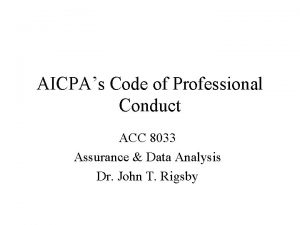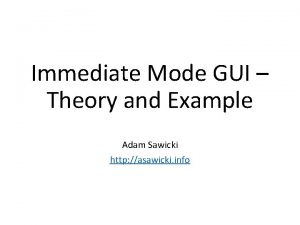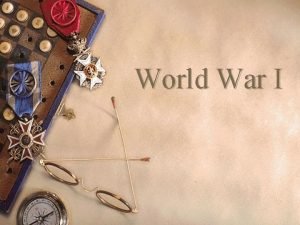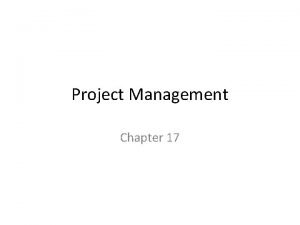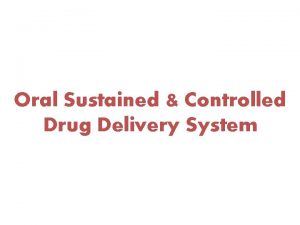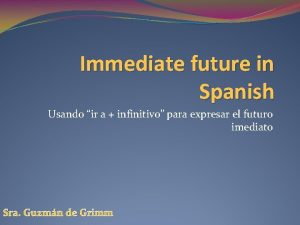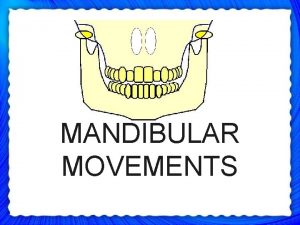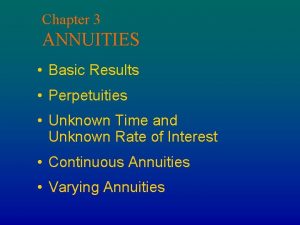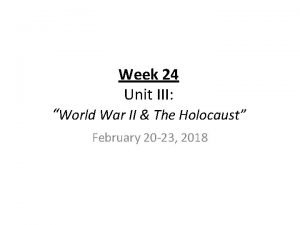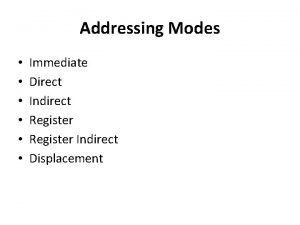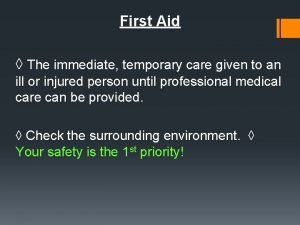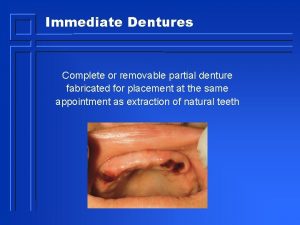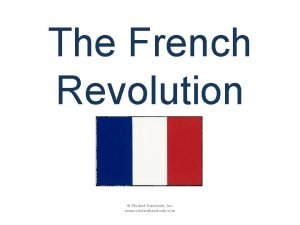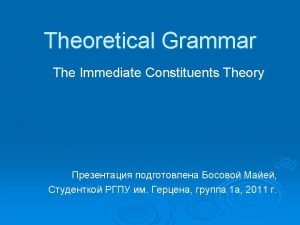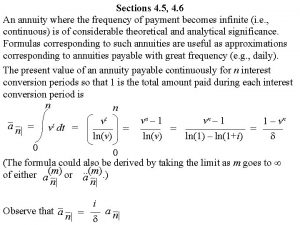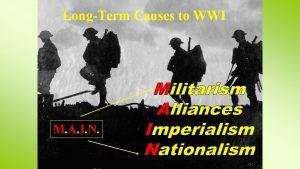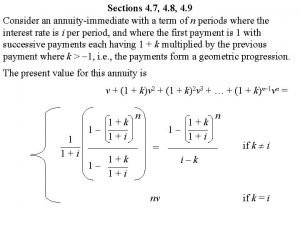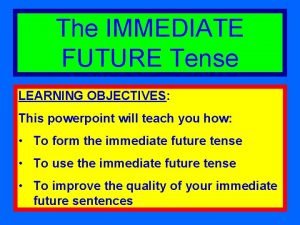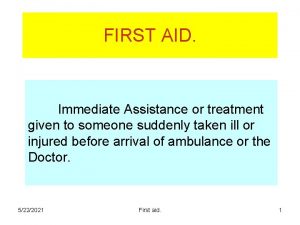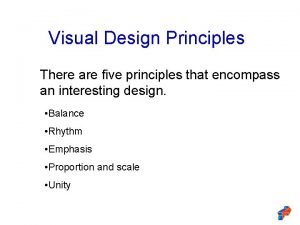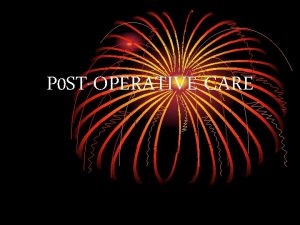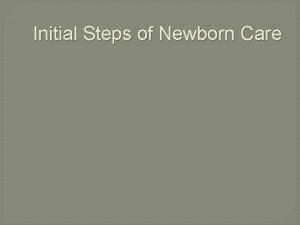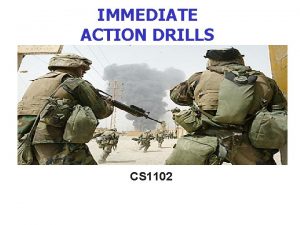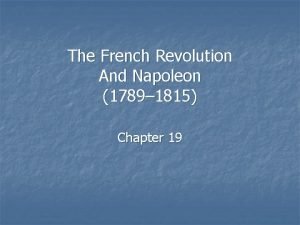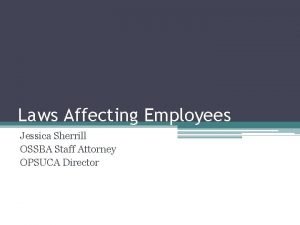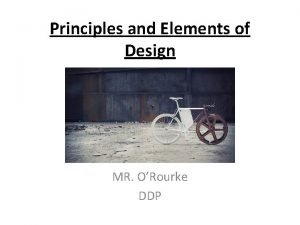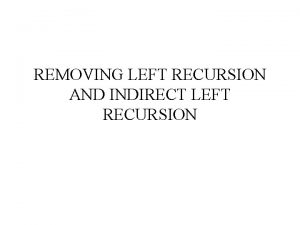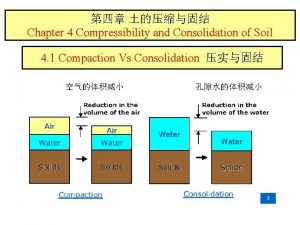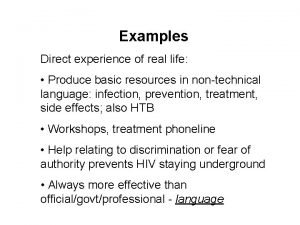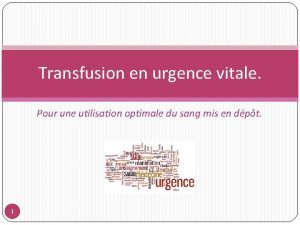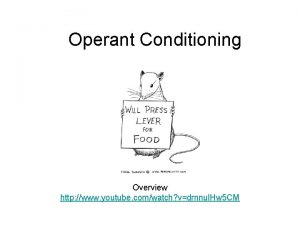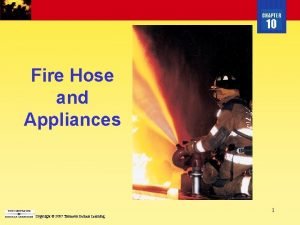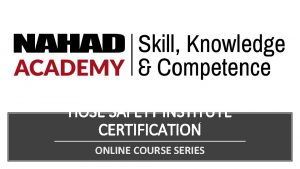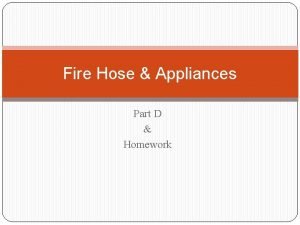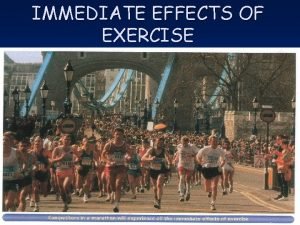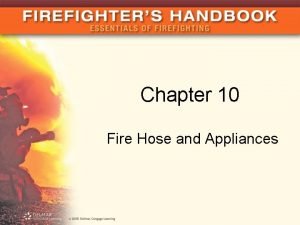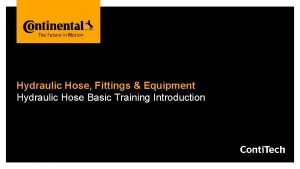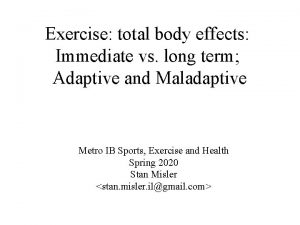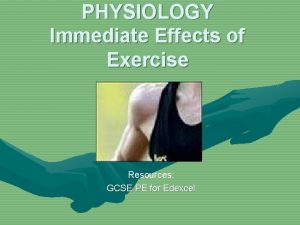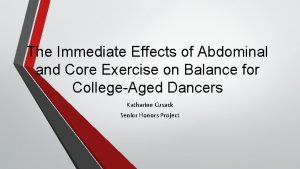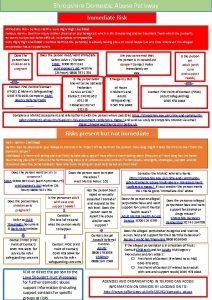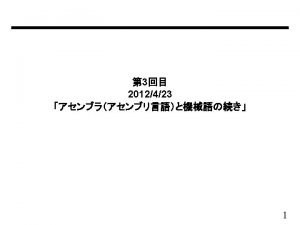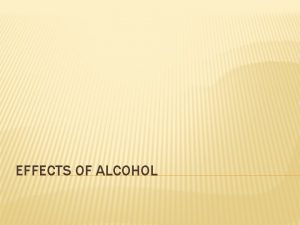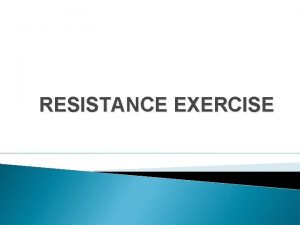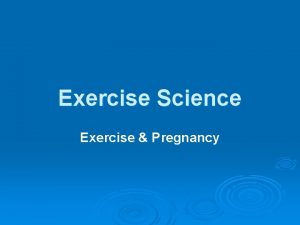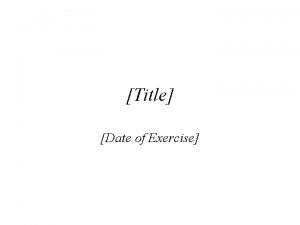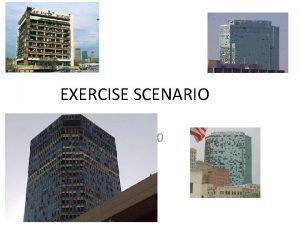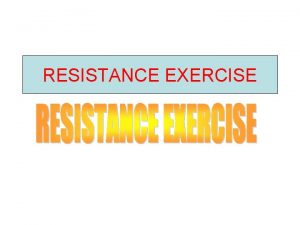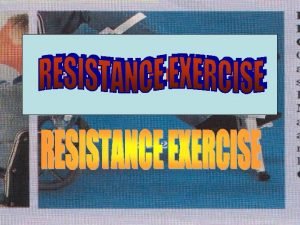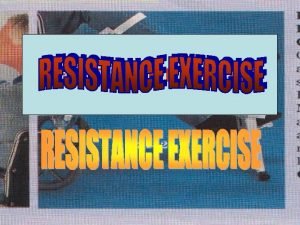IMMEDIATE EFFECTS OF EXERCISE 20122021 HOSE 20122021 HOSE



































































- Slides: 67

IMMEDIATE EFFECTS OF EXERCISE 20/12/2021 HOSE

20/12/2021 HOSE

When you exercise or take part in a strenuous sport you will notice several changes taking place in your body: 1. Your heart beats stronger and faster 2. Your breathing quickens and deepens 3. Your body temperature increases 4. You start to sweat 5. Your muscles begin to ache 20/12/2021 HOSE

1. YOUR HEART BEATS STRONGER AND FASTER During exercise it is mainly ADRENALINE that produces changes in the heartbeat. Adrenaline is a hormone which causes the heart rate to quicken. 20/12/2021 HOSE

2. YOUR BREATHING QUICKENS AND DEEPENS You breathe quicker so as to get more oxygen into the lungs. An efficient heart can then transport this to the working muscles. Training can be of great benefit to the Respiratory System. The capacity of the lungs is increased, which allows more oxygen to be taken in per breath. 20/12/2021 HOSE

Problems produced by exercise vary according to the type of sport or event. Problems for the sprinter are different from those of the middle distance runner. A short distance sprint may cause little problem to a trained sprinter, but a games player, who has to repeatedly sprint, needs to train to cope with this. 20/12/2021 HOSE

The middle distance runner may not be running fast enough to get out of breath, but if they have to run up a steep hill, as in x. country, they may get somewhat breathless. The same could be said for the 5000 m runner required to produce a sprint at the end. The problems of a Marathon runner are quite unique. Here the emphasis is on stamina. It is not more oxygen that is needed but stored food. The problem may not lie in getting breathless, but in having enough stored up glucose and fat in reserve to keep going. 20/12/2021 HOSE

3. YOUR TEMPERATURE INCREASES When we exercise, our muscles are working and they generate heat, so our body temperature rises. Body temperature is regulated by heat radiating from the skin and water evaporating by sweating. When we shiver, our muscles are working to produce heat in order to raise our body temperature. 20/12/2021 HOSE

4. YOU START TO SWEAT As we have just seen, some of our energy is turned into heat. The body will tolerate a small rise in temperature, but very soon we begin to sweat. If the conditions are hot, we sweat more and produce less urine. We also lose salt as well as body heat and water. We have to replace the salt so that the body stays the same, otherwise we will get CRAMP. 20/12/2021 HOSE

It is now common to see drinks being taken during football, tennis, cycling and many other games that go on for a long time, in which competitors sweat a lot. This prevents DEHYDRATION. 20/12/2021 HOSE

5. YOUR MUSCLES BEGIN TO ACHE As we now know, in order to work, muscles need energy. Energy comes from food, which is mainly converted to GLUCOSE (Sugar) To work more efficiently muscles also need plenty of oxygen. Glucose and oxygen are brought to the muscles in the blood. 20/12/2021 HOSE

Wastes such as carbon dioxide are carried away in the blood. This process of getting energy is called RESPIRATION. Glucose +oxygen = Energy + CO 2 + Water When muscles do extra work more Glucose and Oxygen are needed, so more blood must flow to the muscles. So the heart beats faster. 20/12/2021 HOSE

Eventually it becomes impossible to get enough oxygen to the muscles, so they use a different method of getting energy. Glucose is still used, but now there is a waste product called LACTIC ACID is a poison. After a while it will make the muscle ache, and the muscles will stop working. The athlete has to rest while the blood brings fresh supplies of oxygen to the muscles. 20/12/2021 HOSE

20/12/2021 HOSE

20/12/2021 HOSE

20/12/2021 HOSE

20/12/2021 HOSE

20/12/2021 HOSE

20/12/2021 HOSE

20/12/2021 HOSE

20/12/2021 HOSE

EFFECTS OF REGULAR TRAINING AND EXERCISE 1. THE HEART PUMPS MORE BLOOD PER BEAT. 2. THE RECOVERY RATE BECOMES QUICKER. 3. THE RESTING PULSE RATE BECOMES LOWER. 4. THE NUMBER OF CAPILLARIES INCREASES. 5. THE CARDIOVASCULAR SYSTEM BECOMES MORE EFFICIENT. 20/12/2021 HOSE

20/12/2021 HOSE

20/12/2021 HOSE

Some idea of fitness can be gained from the resting pulse rate ( RPR ) because with training, our heart gets bigger and stronger, and it can supply the same amount of blood with fewer beats. However, the RPR does not tell the whole story because it is just as important to know how long the pulse rate takes to get back to normal This is known as our RECOVERY RATE and the quicker this happens the fitter we are. 20/12/2021 HOSE

LONG TERM BENEFITS OF EXERCISE 1. It reduces the risk of coronary heart disease. 2. You can work harder for longer Exercise improves the Cardiovascular system and helps to reduce blood pressure. As we saw earlier, it helps to reduce stress and burns off excess calories. 20/12/2021 HOSE

If we are keen to get fit, this will probably motivate us not to smoke. Smoking is the biggest cause of CHD. So this is a longer-term effect of exercise. Over a period of time we can see that the heart of a fit person will beat far fewer times. This makes it much more efficient and causes less stress to be put on the heart. This is also a long-term effect of exercise. 20/12/2021 HOSE

With training the heart muscle increases in size, thickness and strength, the chambers increase in volume and so the whole heart gets bigger. Therefore we can work harder for longer. This is yet another long-term effect of exercise. 20/12/2021 HOSE

20/12/2021 HOSE

20/12/2021 HOSE

20/12/2021 HOSE

20/12/2021 HOSE

20/12/2021 HOSE

Physical Education Theory 20/12/2021 HOSE

Physical Education The Circulatory and Respiratory Systems 20/12/2021 HOSE

Circulatory System u The human heart is a muscular organ located between the lungs in the middle of your chest. It pumps blood through your body and supplies the cells and tissue with oxygen and nutrients. In order to meet your body's energy demands your heart must beat more than 100, 000 times per day. u Inside your heart are four chambers. The upper chambers are called atria and the lower chambers are called ventricles. The ventricles are larger than the atria. These chambers are responsible for pumping over 7500 litres of blood per day. u The left side of your heart receives the newly oxygenated blood from your lungs and pumps it through your entire body. The walls of the left ventricle are three times thicker than the walls of the right ventricle. The thickness of the cardiac muscle gives the left ventricle the power needed to pump the blood through your entire body, from head to toe and back. 20/12/2021 HOSE

The Heart Each time a blood cell goes around your body, it goes through the heart twice, (double circulation). This happens because there are two circuits: 1. The systemic circuit is the main circuit. It carries oxygenated blood around the body in the arteries, and deoxygenated blood back to the heart along the veins. 2. The pulmonary circuit includes the heart and lungs. It carries deoxygenated blood from the heart to the lungs to be oxygenated. The blood then goes back to the heart to be pumped around the systemic circuit. 20/12/2021 HOSE

REMEMBER !!! u The ARTERIES carry OXYGENATED blood (blood rich with oxygen) u The Veins carry DE-OXYGENATED blood (blood poor with oxygen) u The only exception to this is the Pulmonary vein which carries oxygenated blood from the lungs, and the pulmonary artery that carries deoxygenated blood to the lungs. 20/12/2021 HOSE

To work effectively the Heart and Lungs need to work together smoothly The Movement of Blood Around the Body Blood with a poor oxygen supply is pumped to the lungs Oxygen is transferred into the blood and travels to the heart Once the oxygen has been delivered to the body and waste products have been collected the blood returns to the heart 20/12/2021 The heart pumps blood around the body delivering oxygen HOSE

Remember u Oxygen-Loaded blood goes into the Left side of the heart. u Oxygen-poo. R blood goes into the Right side of the heart. 20/12/2021 HOSE

How Blood is Pumped Around the Body 1. The heart pumps blood at high pressure into the arteries. 2. The artery walls are made of muscle and elastic tissue. They stretch when blood is pumped in, then contract, squirting it along. 3. The artery branches into smaller tubes called arterioles. 4. The arterioles branch into tiny tubes called capillaries. The thin walls allow food and oxygen to pass out to body cells, and carbon dioxide and other waste to pass in. 5. Next the blood flows into larger tubes called venules. It has given up its oxygen. It is deoxygenated. 6. From the venules it flows into a vein, which carries it back to the heart. 20/12/2021 HOSE

The Effects of Exercise on the Circulatory system The Heart is a Cardiac Muscle, when we regularly exercise or train muscles they grow and become stronger. This means: 1. The amount of blood pumped from the heart in one beat will increase (Stroke volume) 2. The total amount of blood pumped in one minute will increase (Cardiac output) 3. Resting heart rate will lower as the heart will pump the blood as required in fewer beats. u The more blood that can be pumped the more oxygen Larger stronger Heart it Small Heart to the muscles that require it. can carry u Regular exercise 20/12/2021 HOSE

Heart Rate u The average resting heart rate is between 60 and 80 bpm (beats per minute). u People who exercise regularly have a resting heart of between 50 -60 bpm. u Steve Redgrave has a resting heart rate of 40 -45 bpm u Recently retired endurance cyclist Miguel Indurain has a resting heart rate of 27 bpm. u Record your heart rate over 15 seconds and multiply it by 4 to find out your resting heart rate. 20/12/2021 HOSE

Heart and Lungs u The heart pumps blood around the body with rich and poor supply of oxygen. Oxygen gets into the blood from the air that we breathe into the lungs. 20/12/2021 HOSE

The Lungs Air is drawn in through the nose or mouth and then on to the trachea. The trachea or windpipe branches into two tubes called bronchi. Each one is called a bronchus, and one goes into each lung. The bronchi branch into smaller tubes called bronchioles. The bronchioles end in bunches of tiny air sacs or alveoli. Each one is called an alveolus. Their walls are so thin that gas can pass through. 20/12/2021 HOSE

Gaseous Exchange u The Heart and Lungs form our Circulatory and Respiratory systems. A gaseous exchange involves both these systems. Oxygen (O) and Carbon Dioxide (CO 2) are exchanged. u Oxygen is put into the blood by the lungs and Carbon Dioxide is taken out of the blood back into the lungs and breathed out of our mouths. 20/12/2021 HOSE

Aerobic or Anaerobic? u u Depending on what exercise we perform will effect what energy system we use. It also depends of the duration and intensity of the activity being performed. Our respiratory and circulatory system can work to get oxygen to our muscles, this happens in mainly endurance activities. This is known as AEROBIC activity (with oxygen). When we require our muscles to perform explosive activities over a short period of time it is not possible to get enough oxygen (energy) that quickly so the body uses GLYCOGEN instead. This is called ANAEROBIC activity (without oxygen). But there are consequences… 20/12/2021 HOSE

How, When and Where is it used? u u u In your exam you will probably be asked to write about how anaerobic and aerobic conditions can effect performance in different sports and activities. You will need to know different examples of them both. Endurance (Aerobic) – Running, swimming, cycling. This activity can be continued in line with the persons fitness levels and can be replaced by the circulatory and respiratory systems. Speed and Power (Anaerobic) – throwing, jumping, lifting. This can only last for about 40 seconds and cannot be replaced during anaerobic activity it just simply runs out (hitting the wall) 20/12/2021 HOSE

Team Games u u u Activities such as football, rugby, netball, tennis, basketball and hockey require the use of both systems. Why? Answer Because they require steady periods of activity (Jogging), followed by explosive activities (sprinting past player, serving the ball) that cannot be maintained throughout the whole game. But one system can recover while using the other. 20/12/2021 HOSE

Lactic Acid When we work anaerobically we can produce explosive activities. We can only do this for a short time. This is because when we exercise without using oxygen we use glycogen. This leaves a waste product called Lactic Acid. Lactic acid is produced when we exercise aerobically and anaerobically but is produced faster when we work out without using oxygen. Lactic acid is a poison that stops the muscles from working effectively. This can only be stopped by using oxygen as an antidote. This means we have to work aerobically using oxygen, which in turn means we have to work out at a lower intensity. HOSE or slower. 20/12/2021 u

Oxygen Debt The process of how effectively we can get oxygen to our muscles can effect our performance. u When the muscles require more oxygen than the body can supply it is called the Oxygen Debt. The more training we do the more we can perform 20/12/2021 and recover from HOSE u

Effects of Exercise on the Respiratory system Our respiratory system will become more efficient at getting oxygen from the lungs to the blood, and also better at getting carbon dioxide from the muscles to the blood then to the lungs to be breathed out. u This can be of benefit to the person because: u The total volume of air breathed in and out in one breathe will increase (Vital capacity) u The amount of air entering and exiting your system at rest will increase (Tidal 20/12/2021 HOSE volume) u

Blood u Blood has THREE main functions 1. Transport – Blood transports oxygen from the lungs to the body and brings carbon dioxide to the lungs to be breathed out. It also carries waste products to the kidneys to be filtered and excreted and carries particles of food from the gut to parts of the body. 2. Protection – Blood contains clotting agents (Platelets) to help wounds stop bleeding. Regulation – Blood also helps to keep the body's temperature constant. Veins and capillaries will expand to help heat loss, for example red face when just finished exercising. In extreme temperatures 20/12/2021 HOSE the body system cannot perform this properly. 3.

What is BLOOD made up of? u Blood is made up of several components 1. White Blood Cells - You have far fewer white blood cells than red blood cells but you make extra when you are ill. They fight disease by destroying bacteria using antibodies, toxins using antitoxins, foreign microbes by consuming them. 2. Red Blood Cells - Red blood cells carry oxygen around the body in red haemoglobin. They have no nucleus and there are millions in each drop of blood. 3. Platelets - Platelets help make the blood clot. They are sticky fragments of cells with no nucleus. They stick together in cuts and make tiny fibres grow. Red cells get trapped in the fibres and form a blood clot. This turns into a scab. 4. Plasma - Plasma is a yellow liquid (water & dissolved substances) that carries everything in the bloodstream. That includes Glucose and other nutrients for cells, hormones, carbon dioxide from cells. 20/12/2021 HOSE

RECAP u u u Can you describe what these are? Circulatory system Respiratory system Veins Arteries Oxygenated blood Deoxygenated blood Aerobic Anaerobic Lactic acid Oxygen debt Gaseous exchange 20/12/2021 HOSE

QUESTIONS u u u u What are the upper chambers of the heart called? What’s different about the pulmonary vein and artery? Where does the heart pump oxygen rich blood? What is an effect of regular exercise on the heart? What is the difference between aerobic and anaerobic activity? What is lactic acid? What are the 3 functions of blood? What is blood made up of? 20/12/2021 HOSE

Extra Activities u Class heart rate list u Complete Handouts u Complete recap list 20/12/2021 HOSE

20/12/2021 HOSE

Energy Systems u What are energy systems for? u What is ATP? u ATP is stored in the…………. 20/12/2021 HOSE

ENERGY SYSTEMS u u 1. 2. 3. Energy for muscular activity and other biological work comes from the breakdown of adenosine triphosphate (ATP). ATP loses one phosphate molecule and breaks down to Adenosine diphosphate. Since the store for ATP is limited, the body must regenerate its ATP as quickly as it is broken down. This regeneration connects the ADP and Pi together again to create ATP once more. This regenerating of ATP is done by the breakdown of fuel reserves. There are three energy systems for this ATP-PC system Lactic acid system Oxygen (or aerobic ) system 20/12/2021 HOSE

The ATP-CP System The ATP- PC system uses a chemical fuel reserve, Creatine Phosphate, which is stored in the muscle. This process is anaerobic meaning it does not require the use of oxygen for it to work. CP is broken down into Creatine and Phosphate and the energy released from the breakdown is used to combine ADP and Pi to produce ATP. The supply of CP is limited and can only be used effectively for 10 to 20 seconds. When sufficient oxygen is available CP is regenerated ready to use again if needed. 20/12/2021 HOSE

The Lactic Acid System The lactic acid system uses the anaerobic breakdown of glycogen. Carbohydrate is stored in the body as glycogen (in the liver and in muscles). This process does not require oxygen. From the break down of glycogen we get a biproduct called pyruvic acid. At this stage the pyruvic can follow two courses of action. In the first if insufficient oxygen is available for further breakdown the pyruvic acid becomes lactic acid and is stored until sufficient oxygen is present and it then becomes pyruvic acid again and begins its aerobic breakdown. 20/12/2021 HOSE

The Aerobic System u The Aerobic system produces its energy by utilising oxygen. It is performed through a series of chemical reactions known as the Krebs Cycle. Here we have the continued breakdown of glycogen from when it becomes pyruvic acid and enters the mitochondria. Fats (and in extreme circumstances proteins) are also broken down here as they can only be broken down aerobically. The results are the regeneration of ATP molecules and the production of by-products - water and carbon dioxide. 20/12/2021 HOSE

Summary of Energy Systems ATP-CP System u u u u Lactic Acid System Aerobic System Anaerobic Very rapid Chemical: CP Anaerobic Rapid Food: glycogen Very limited ATP Muscular stores limited Explosive, sprint 100 m Limited ATP Lactic Acid causes fatigue 1 to 3 min duration 400 m Aerobic Slow Food: CHO, Fat, Protein Unlimited ATP No fatiguing by-products Endurance Marathon 20/12/2021 HOSE

WHAT HAPPENS TO OUR BODY IN EXERCISE? Breathing rate gets deeper and faster: This is because the working muscle need more oxygen to function. By breathing faster and deeper more oxygen is getting into the lungs. From here oxygen then enters the blood and is then pumped by the heart around the body to the working muscles. Heart Rate Increases: The heart pumps blood and oxygen in the blood around the body. When the body and the muscles in particular need more oxygen the heart pumps faster to get more oxygen to the muscles. 20/12/2021 HOSE

THE BODIES RESPONSE TO EXERCISE Fill out the following table: FUNCTION DESCRIPTION inc OR decr Amount HEART RATE 70 bpm-average PERSPIRATION Up to 1 -litre in exercise RESPIRATION RATE Up to 40 -50 breaths during exercise STROKE VOLUME 70 -80 mls at rest TIDAL VOLUME ½ l at rest and 2. 5 l during exercise CARDIAC OUTPUT 4 -6 l/min rest 20/12/2021 HOSE Reason

THINGS TO THINK ABOUT: u There are many physiological changes in the body at exercise u What makes it difficult to sprint as fast as you can for more than one minute? Write a detailed answer in paragraph form. 20/12/2021 HOSE
 Immediate effects of exercise
Immediate effects of exercise Which coupling goes on the inside of a straight hose roll?
Which coupling goes on the inside of a straight hose roll? What were the immediate effects of reconstruction
What were the immediate effects of reconstruction Long term effects of exercise on skeletal system
Long term effects of exercise on skeletal system Recovery techniques based on immediate update
Recovery techniques based on immediate update Terminal weaning vs immediate extubation
Terminal weaning vs immediate extubation This is a tree
This is a tree What is immediate family considered
What is immediate family considered Immediate mode ui
Immediate mode ui World war 2 brain pop
World war 2 brain pop Immediate predecessor in project management
Immediate predecessor in project management Difference between sustained release and controlled release
Difference between sustained release and controlled release Immediate future spanish
Immediate future spanish Posselt envelope of motion
Posselt envelope of motion Intrasegment direct addressing mode
Intrasegment direct addressing mode Perpetuity immediate formula
Perpetuity immediate formula Has an immediate and profound effect on a design
Has an immediate and profound effect on a design Database recovery techniques
Database recovery techniques Hlt addressing mode
Hlt addressing mode Absolute power corrupts absolutely
Absolute power corrupts absolutely Post mortem changes
Post mortem changes Audience in soapstone
Audience in soapstone What was an immediate cause of the 1789 french revolution
What was an immediate cause of the 1789 french revolution Displacement addressing
Displacement addressing Temporary care given to a person
Temporary care given to a person The immediate cause of ww1
The immediate cause of ww1 Immediate predecessor in project management
Immediate predecessor in project management Immediate memory
Immediate memory Partial flanged immediate denture
Partial flanged immediate denture Neonatal bradycardia algorithm
Neonatal bradycardia algorithm The effects of the french revolution
The effects of the french revolution Immediate update and deferred update in dbms
Immediate update and deferred update in dbms Ter thin client
Ter thin client Immediate constituent analysis
Immediate constituent analysis Annuity immediate formula
Annuity immediate formula Whats immediate family
Whats immediate family Main long term & immediate causes of wwi
Main long term & immediate causes of wwi American pathway immediate annuity
American pathway immediate annuity Perpetuity immediate formula
Perpetuity immediate formula Future tense of wear
Future tense of wear Immediate assistance
Immediate assistance Gradated rhythm
Gradated rhythm Immediate phase
Immediate phase Purpose of immediate newborn care
Purpose of immediate newborn care Immediate newborn care steps
Immediate newborn care steps Immediate action drills
Immediate action drills Four phases of the french revolution
Four phases of the french revolution Declaration of the immediate causes
Declaration of the immediate causes Definition of immediate family
Definition of immediate family Immediate family meaning
Immediate family meaning Immediate memory test
Immediate memory test Absolute addressing mode in computer architecture
Absolute addressing mode in computer architecture It has an immediate and profound effect on design.
It has an immediate and profound effect on design. Immediate jeopardy plan of removal
Immediate jeopardy plan of removal Remove left recursion
Remove left recursion Coefficient of volume compressibility (mv formula)
Coefficient of volume compressibility (mv formula) Direct experience example
Direct experience example Transfusion en urgence vitale immédiate
Transfusion en urgence vitale immédiate Immediate reinforcers
Immediate reinforcers Immediate environment marketing
Immediate environment marketing How to calibrate hose end sprayer
How to calibrate hose end sprayer Thyromental distance
Thyromental distance Panty hose company
Panty hose company Accordion load fire hose
Accordion load fire hose Nahad hose institute
Nahad hose institute Eine schwarze hose
Eine schwarze hose Nfpa 1961 standard on fire hose
Nfpa 1961 standard on fire hose Triple layer hose load diagram
Triple layer hose load diagram
